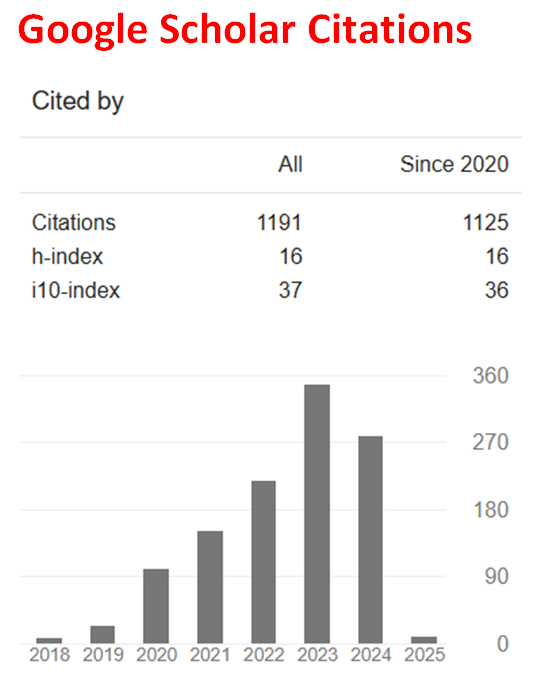On Characterization of Optimal Control Model of Whooping Cough
Abstract
Whooping cough is a vaccine avoidable public health problem which is caused by bacterium Bordetella Pertussis and it is a highly contagious disease of the respiratory system. In this paper, an SIR epidemiological model of whooping cough with optimal control strategy was formulated to control the transmission. The model was characterized to obtain the disease free and the endemic equilibrium points. Finally, the simulation was carried out using the Forward-backward sweep method by incorporating the Runge Kutta method to check the validity and the result obtained was an improvement over the existing results.
Downloads
References
A.J. Arenas, G. Gonzalez-Parra and B.M. Chen-Charpentier, A nonstandard numerical scheme of predictor-corrector type for epidemic models, Computers and Mathematics with Applications 59(12) (2010), 3740-3749. https://doi:10.1016/j.camwa.2010.04.006
E.L. Arnal, T. Grunert, N. Cattelan, D. Degouw, M.I. Villalba, D.O. Serra, F.R. Mooi, M.E. Ehling-Schulz and O.M. Yamtorno, Bordetella pertussis isolates from argentinean whooping cough patients display enhanced biofilm formation capacity compared to Tohama I reference strain, Frontiers in Microbiology 1352 (2015), 1-12. https://doi.org/10.3389/fmicb.2015.01352
A. Aslanabadi, K. Ghabili, K. Shad, M. Khalili and M. Sajadi, Emergence of whooping cough: notes from three early epidemics in Persia, The Lancet Infectious Disease 15(12) (2015), 1480-1484. https://doi.org/10.1016/s1473-3099(15)00292-3
E. Asano, L.J. Gross, S. Lenhart and L.A. Real, Optimal control of vaccine distribution in a rabies metapopulation model, Journal of Mathematical Biosciences and Engineering 1 (2007), 1-20.
M.H.A. Biswas, Optimal control of nipah virus (NIV) infections: A Bangladesh scenario, Journal of Pure and Applied Mathematics: Advances and Applications 12(1) (2014), 77-104.
M.H.A. Biswas, M.M. Haque and U.K. Mallick, Optimal control strategy for the immunotherapeutic treatment of HIV infection with state constraint, Optimal Control Applications and Methods 40(4) (2019), 807-818. https://doi.org/10.1002/oca.2516
V. Bouchez and N. Guiso, Bordetella pertussis, B. parapertussis, vaccines and cycles of whooping cough, Pathogens and Disease 73(7) (2015), 01-06. https://doi.org/10.1093/femspd/ftv055
A.M. Elaiw, M.A. Alghamdi and S. Aly, Hepatitis B virus dynamics; modeling, analysis and optimal treatment scheduling, Discrete Dynamics in Nature and Society 2013 (2013), 21-29. https://doi.org/10.1155/2013/712829
J.S. Lavine, A.A. King and O.N. Bjørnstad, Natural immune boosting in pertussis dynamics and the potential for long-term vaccine failure, Proceedings of the National Academy of Sciences 108(17) (2011), 7259-7274. https://doi.org/10.1073/pnas.1014394108
S. Lenhart and J.T. Workman, Optimal control applied to biological models, Mathematical and Computational Biology Series, Chapman and Hall/CRC, London, 2007.
G.G. Parra, A.J. Arenas and B.M. Chen-Charpentier, Combination of nonstandard schemes and Richardson’s extrapolation to improve the numerical solution of population models, Mathematical and Computer Modeling 52 (2010), 1030-1036. https://doi.org/10.1016/J.MCM.2010.03.015
Mst. Shanta Khatun and Md. Haider Ali Biswas, Optimal control strategies for preventing hepatitis B infection and reducing chronic liver cirrhosis incidence, Infectious Disease Modelling 5 (2020), 91-110. https://doi.org/10.1016/j.idm.2019.12.006

This work is licensed under a Creative Commons Attribution 4.0 International License.
.jpg)

